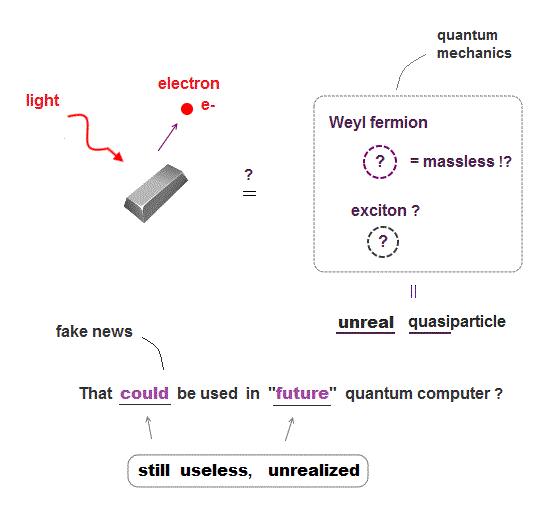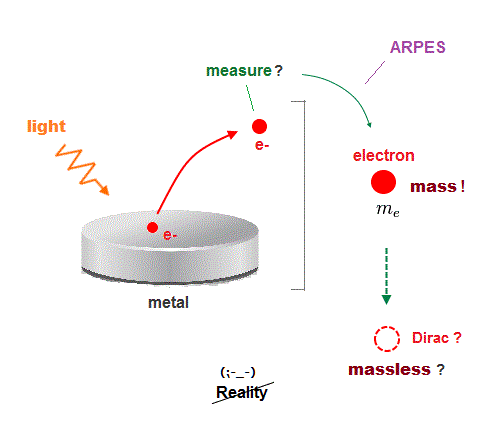

(Fig.1) ↓ Weyl, exciton = unreal quasiparticles. 

Old quantum mechanics needs to make up fictitious quasiparticles with fake mass and charge to explain experimental results.
This is why quantum mechanics is useless forever and they need to rely on "imaginary" target of fictional quantum computer, which is scam.
This research uses unreal Weyl quasiparticle to explain electric conductivity of some metal.
What is this unreal quasiparticle useful for ? This news just mentions imaginary "future quantum computer ?" ← still useless now, nothing realized.
This research also relies on unreal quasiparticle exciton (= excited electron ? ), which is just nonphysical math symbol ( this p.3 ), so useless.
Tha last of this abstract uses vague phrases "a step towards .. ?" ← still useless, nothing realized.
Skyrmion is also unreal quasiparticle for magnetic vortex. The latter of this news just says "it's early to say what will be winners ?" ← still useless.
The last of this news also uses vague phrases "we are still a decade away from quantum computer ?" ← still useless in "imaginary" future computer.
(Fig.2) Misinterpret an electron as fictional quasiparticle. 

Quantum mechanical experiments are contradictory.
Almost all condensed matter physics uses angle-resolved photo emission (= ARPES ).
In ARPES, they measure an elecron ejected by light, and call the electron "fictional quasiparticle", which is massless but slower than light ? ← contradicts Einstein.
So "electron = massless unreal quasiparticle ?" is the current physics ( this p.10 ), which artificial misinterpretation makes quantum mechanics useless.
This experiment tries to measure 'electron spin' using this spin-ARPES, but it's doubtful and impossible.
Electron spin lacks reality, its spinning speed exceed light speed. All we can measure is its magnetic moment, which happened to be the same as classical orbit.
Stern-Gerlach experiments can measure only magnetic moment of "atom", Not electron spin ( this p.3 ) with the same Bohr magneton, so No proof of electron spin.
In spin-ARPES, all they can detect is an electron (= Not spin ) scattered from nuclei. They just speculate 'spin' from asymmetric scattering angle.
Electrons scattered from target atomic nuclei fly in random directions by Coulomb force, which is unpredictable, cannot be used as a proof of 'unseen' spin ( this p.11 ).
What is this unreal spin useful for ? The last of this abstract uses vague phrases "Our findings pose challenges .. ?" ← still useless, nothing realized.

2019/1/11 updated. Feel free to link to this site.